July 2018
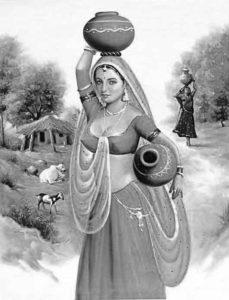
Here we see a fluttering of the left eye of a woman separated from her husband. For women, this is a good omen indeed! Anticipating the return of her husband, she ties a festoon with her eyes to the entrance door and tells the left eye, “O Left Eye, who signalled the good omen of my husband’s return! Out of gratitude for your help to me, I will first see my husband through you and will reward you in that manner.” Look here, we find a charitable...
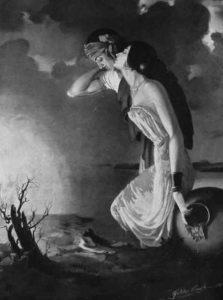
One has to really admire the cleverness of some of these two-timing women. One of them turned in a fine performance of bawling after having, apparently, been stung by a scorpion. Her friends, ever too eager to help, carried her away right in front of her artless husband – evidently to get her the much-needed medical assistance. No prizes here for guessing that it was in fact to her lover’s secret nest that she was really transported to. Now this...
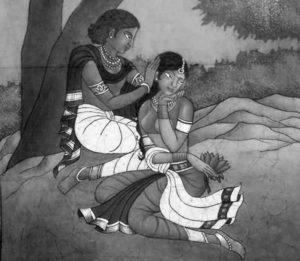
We shall now go back in time by nearly two thousand years. Behold! Godavari flows in a mellifluous melancholic tune. Swaying the entire countryside near Pratiṣṭhāna[1] to the graceful swinging of her waves, as she gushes on, yearning to rendezvous with her beloved, the Eastern Ocean. That is indeed why her valleys are dotted with dense reeds and canes – signifying the frequent haunts of passionate young lovers. Above that, beyond the banks, the...
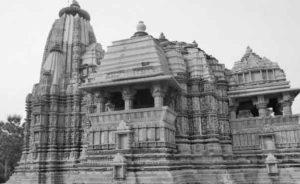
The Shield of the Senas
Ramapala was the last of the Pala emperors and he was overthrown by the rise of the Senas, who were kshatriyas from Karnataka. The foremost kings of this dynasty, which can be said to have come from the Chalukya royal family of Karnataka, were Vijayasena and Lakshmanasena.
The Senas greatly valued Sanatana Dharma as well as the spirit of kshaatra. They also encouraged the arts and literature. Umapatidhara, Sharana,...
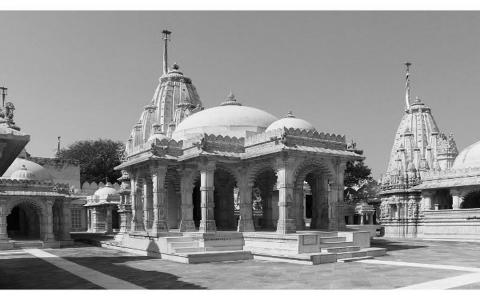
அக்ரூரர் கோகுலத்துக்கு வந்து கிருஷ்ணனை 'தனுர்யாகத்துக்கு' அழைத்துச்செல்ல வருகையில், அவன் தனது வளர்ப்புத் தாய்-தந்தையரான யசோதை-நந்தகோபரிடமிருந்து விடைபெற்றுச் செல்கிறான். அவனது சகோதரனான பலராமனும் அவனுடன் கூடச்செல்கிறான். மதுரா நகருக்குள் பிரவேசிக்கையிலே அவ்விருவரும் அரண்மனை சலவைக்காரனை சந்திக்கின்றனர். கண்ணனும், பலராமனும் அரச குடும்ப விருந்தினராயினும், அவர்கள் அச்சலவைக்காரனிடத்தில் புத்தாடைகளைக் கேட்கையில், அவன் அவ்விருவரையும் கௌரவக் குரைச்சலாக...
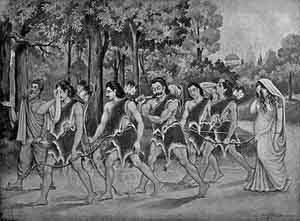
Śakuni said, “King Yudhiṣṭhira! Dhṛtarāṣṭra has arranged for the return of all your wealth; what he’s done is right. I’ve now suggested a condition that’s greater than acquiring wealth. If you defeat us in the game of dice, we shall don garments made from deerskin and retire to the forest for twelve years; then we will spend the thirteenth year incognito. If you find our whereabouts in the thirteenth year, we’ll stay in the forest for twelve...
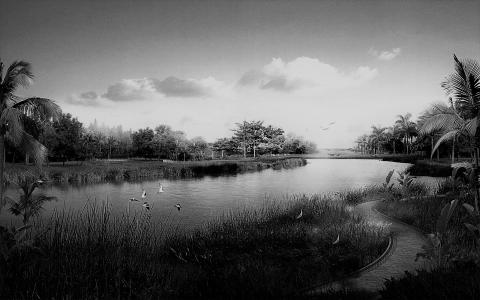
ಇಂಥ ಎಷ್ಟೋ ಸಂಗತಿಗಳನ್ನು ಧ್ವನಿಸುವಂಥ ಬೆಲೆಯುಳ್ಳ ವಿವರಣೆಯನ್ನು ಅಭಿನವಗುಪ್ತ ನೀಡಿದ್ದಾನೆ. ಅವನ ಪ್ರಕಾರ ಉಭಯಧರ್ಮಿಗಳೂ ಲೋಕಸ್ವಭಾವದಲ್ಲಿಯೇ ಪರಮಾರ್ಥತಃ ನೆಲೆಗೊಂಡಿವೆ. ಲೋಕವೆಂದರೆ ನಮ್ಮ ಸುತ್ತಣ ಜಗತ್ತು. ಇದು ಅಲ್ಲಿಯ ಜನಜೀವನದ ಸಕಲಾಂಶಗಳನ್ನೂ ಒಳಗೊಂಡಿದೆ. ಹೀಗಾಗಿ “ಪ್ರವೃತ್ತಿ”ಯಲ್ಲಿ ಸಾಮಾನ್ಯವಾಗಿ ತೋರಿಕೊಳ್ಳುವ ಎಲ್ಲ ಸಂಗತಿಗಳೂ ಇಲ್ಲಿಗೆ ಅನ್ವಯಿಸುತ್ತವೆ. ಆದುದರಿಂದ “ಲೋಕಧರ್ಮಿ”ಯು ಕೆಲವೊಂದಂಶಗಳಲ್ಲಿ “ಪ್ರವೃತ್ತಿ”ಗೆ ನಿಕಟಬಂಧು. ನಾಟ್ಯವು ಬಲುಮಟ್ಟಿಗೆ ಲೋಕಾಶ್ರಿತವಾದ ಕಾರಣ “ಲೋಕಧರ್ಮಿ”ಯೊಂದೇ ಪಾರಮ್ಯವನ್ನು ತಾಳುವುದೆಂದು ಹೇಳಬಹುದಾದರ...
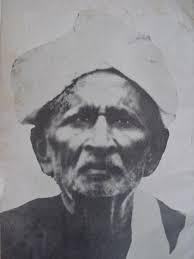
M S Puttanna was a person who toiled for the revival of Kannada right from the beginning. During his initial days, he worked for a while along with Venkatakrishnayya and B M Srinivasa Iyengar, and later, on his own. I’ve heard that M S Puttana began his career with a government job at the Chief Court. He used to work as a translator. There is an interesting anecdote of those bygone days. In the Chief Court of those days, the manager of the...
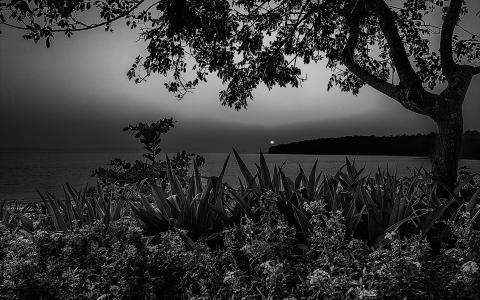
ಪ್ರವೃತ್ತಿಗಳು
ಪ್ರವೃತ್ತಿಗಳೆಂದರೆ ಕಲಾನಿರ್ಮಾಣಕಾಲದಲ್ಲಿ ರಸೋಚಿತವಾಗಿ ಒದಗಿಬರಬಲ್ಲ ಪ್ರಾದೇಶಿಕವೈಶಿಷ್ಟ್ಯಗಳೆಂದು ಸ್ಥೂಲವಾಗಿ ಹೇಳಬಹುದು. ಇವನ್ನು ವೃತ್ತಿಗಳೊಡನೆ ಜೊತೆಗೂಡಿಸಿದಾಗ ದೇಶೀ ಮತ್ತು ಮಾರ್ಗಗಳ ಸಂವಾದವನ್ನೇ ಕಾಣಬಹುದು. ವೃತ್ತಿಗಳು ಮುಖ್ಯವಾಗಿ ವೇಷ-ಭಾಷೆಗಳಿಗೂ ನಯ-ವಿನಯಗಳಿಗೂ ಸಂಬಂಧಿಸಿವೆ. ಈ ಕಾರಣದಿಂದ ಇವು ಕಲೆಯ ಕೇಂದ್ರಭೂತವಾದ ಸಾತ್ತ್ವಿಕಾಭಿನಯ ಅಥವಾ ಸಾತ್ತ್ವತೀವೃತ್ತಿಯಿಂದ ಸ್ವಲ್ಪ ದೂರವಿದ್ದರೂ ಔಚಿತ್ಯಪೂರ್ಣವಾಗಿ ಬಳಕೆಗೊಂಡಾಗ ಅವು ಸತ್ತ್ವವನ್ನೇ ಪೋಷಿಸುತ್ತವೆಂಬುದು ಗಮನಾರ್ಹ. ಕಾವ್ಯದಲ್ಲಿ ಶಬ್ದಾರ್ಥಾಲಂಕಾರಗಳ ಸ್ಥಾನ ಹೇಗೋ ಹ...
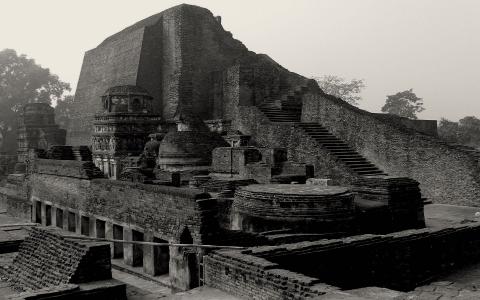
After Maharaja Shashanka, for a long period of around one hundred years, Bengal was without a ruler. With a view to remedy the situation, the local chieftains—large and small—seem to have come together and elected one among them as their supreme leader, solely keeping in mind the welfare of the people. The fruit that resulted from these actions is the great lineage of the Palas. This is indeed one of the great traits of the noble values of ...
